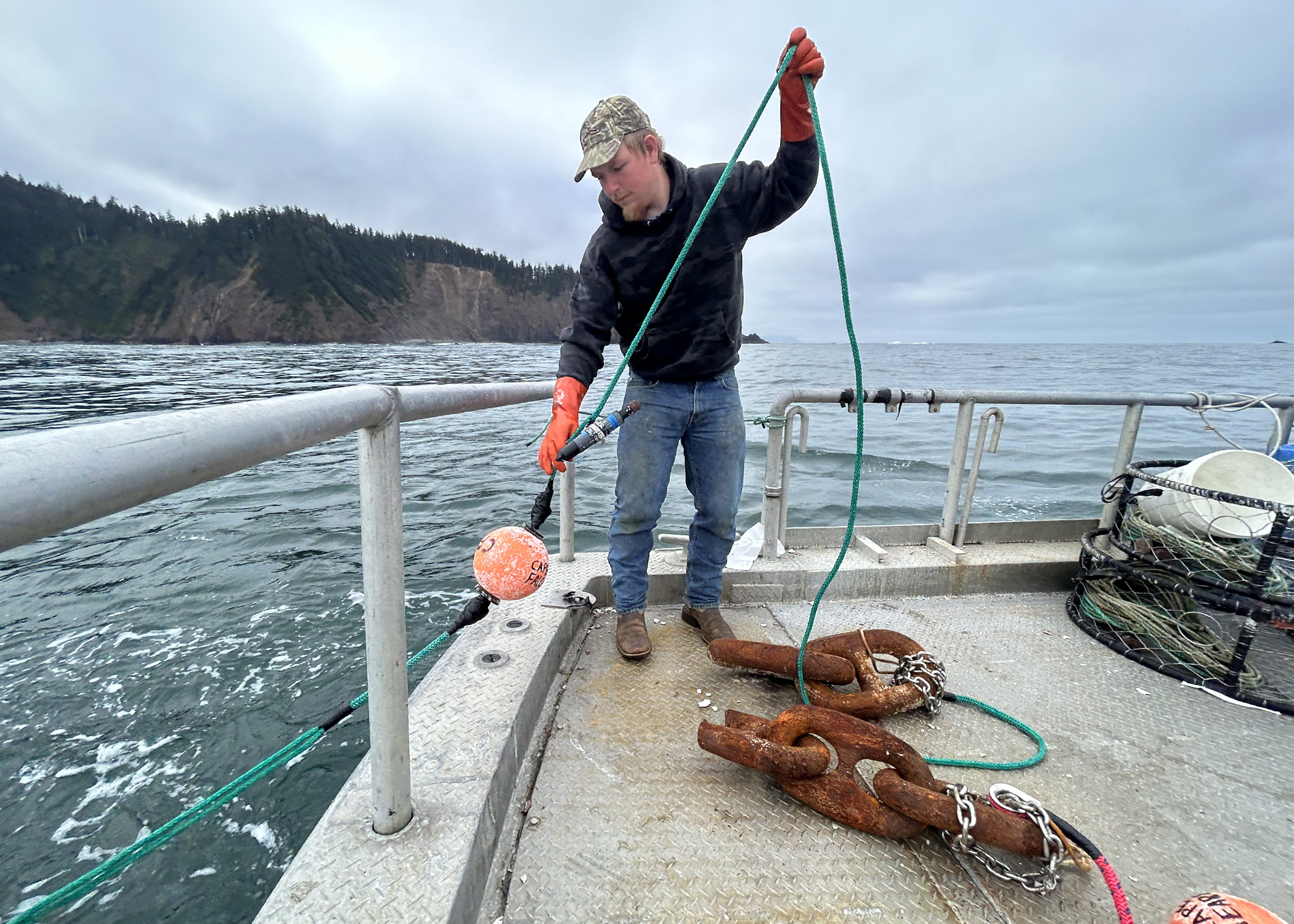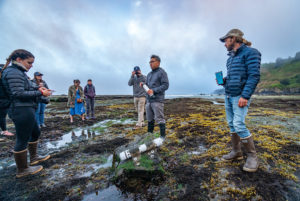
By MARK FREEMAN/ODFW News Service
NEWPORT – Ocean monitoring in Oregon’s five marine reserves is trying to unlock secrets about temperatures and oxygen levels known to impact groundfish and invertebrate activities, create stresses on ecosystems and even alter sport anglers’ catches.
Some of the data go back two decades at what is now the Cape Perpetua Marine Reserve near Yachats and are buoyed by oceanography monitoring in recent years at the state’s four other marine reserves.
The phenomenon is called hypoxia, and data collected in the reserves is showing an apparent trend in size and length of these episodes, and that they differ throughout the Oregon coast.

“In some places we’ve never looked until recently, we’re starting to see our first glimpses of it,” said Lindsay Aylesworth, the marine reserves program leader for the Oregon Department of Fish & Wildlife.
Enacted by the 2009 Oregon Legislature, the marine reserves program includes five actual marine reserves and nine protected areas that together cover nine percent of Oregon’s near-shore ocean waters. The reserves, where no plants or animals can be removed and where development is banned, are underwater listening stations tracking ocean changes including fish, invertebrate and algal communities.
It is the first long-term near-shore ocean conservation and monitoring program run by the state and includes research on the economic, social and cultural dynamics of the Oregon coast and coastal communities. The program is funded through the state’s general fund budget.
Sensors deployed
The program’s main oceanography monitoring began last week with the placement of special moorings in the Cape Falcon Marine Reserve as well as in a nearby comparison area off Cape Meares. The moorings, which were deployed by a commercial boat captain hired by the program, contain sensors that track ocean temperature and oxygen levels through early fall, when they will be removed.
Similar sensors were attached to eight “Standard Monitoring Units for Recruitment of Fishes” — commonly known as SMURFs. They were deployed in late April at the Otter Rock marine reserve and the Cape Foulweather area near Newport.
Another mooring is set for placement this week at the Cascade Head marine reserve. More units also are planned for deployment in the Redfish Rocks marine reserve, the southernmost reserve near Port Orford.
Data on oxygen and temperature has been collected consistently since 2002 at Cape Perpetua, which helped get these waters designated as a marine reserve in 2014.
That monitoring is done by Oregon State University and a scientific partnership that studies the California current that moves deep into the central Oregon coast.
The Cape Perpetua oceanography monitoring efforts are the longest observed record for dissolved oxygen in near-shore ocean waters on the West Coast. The moorings allow consistent tracking of temperature and oxygen levels that can’t otherwise be chronicled.

“Unfortunately, you can’t see oxygen levels from space,” said Francis Chan, the OSU associate professor who is the director of the Cooperative Institute for Marine Ecosystem and Resources Studies. “You have to put something in the water.”
Collectively, early data continue to show an apparent relationship between oxygen levels, wind direction and water temperatures. The data have shown that north winds desired for good ocean nutrient conditions routinely coincide with decreases in sea temperatures and periods of low oxygen levels, which occasionally can plunge to hypoxic levels. These zones seem to disperse with the return of south winds that bring warmer sea temperatures and higher oxygen levels.
The size of these low-oxygen zones come and go and vary across state waters, but they have grown in size and time in recent years, the data suggest. Low oxygen levels, particularly when they plunge to levels of hypoxia, are known to place stress on fish, invertebrates and underwater ecosystems.
The sensors show a pattern that bouts of low oxygen can differ throughout state waters, with water off the southern Oregon coast usually faring better than those on the central and north coasts, Chan said.
These sensors, for instance, tracked a period of nearly six months in 2021 when portions of Oregon’s near-shore waters were below hypoxic levels, Chan said.
Data also show that the Cape Falcon Reserve hit the hypoxia threshold only one day in September during last year’s monitoring season.
“There are a lot of neighborhoods out there,” Chan said.
Cape Perpetua research
While Cape Perpetua has been the backbone of oceanographic monitoring, similar data collected at Oregon’s four other near-shore reserves began as early as 2010 and been consistent since 2019.
After various hits and misses on methods, suspending sensors from a crab line weighed down to the sea floor by a large anchor chain and marked by flagged floating buoys was the most reliable and cost-effective way to collect these data, Aylesworth said. Each mooring costs about $3,500, with the oxygen sensor alone costing about $1,600.
Also, crab pots containing similar sensors are deployed during hook-and-line fish surveys in reserves and comparison areas, unlocking information about ocean conditions and catch rates.
During days of high levels of dissolved oxygen, catch rates during the marine reserves’ hook-and-line surveys show better catches of groundfish, data show.
Days with low oxygen levels correspond to relatively poor catch rates among survey volunteers.
“It’s really hard to catch fish when oxygen levels are low,” Aylesworth said.
More years of data are needed before any definitive conclusions can be made on the relationships between water temperatures, winds, ocean oxygen levels and angler success.
“It highlights the value of long-term monitoring,” Aylesworth said.




















